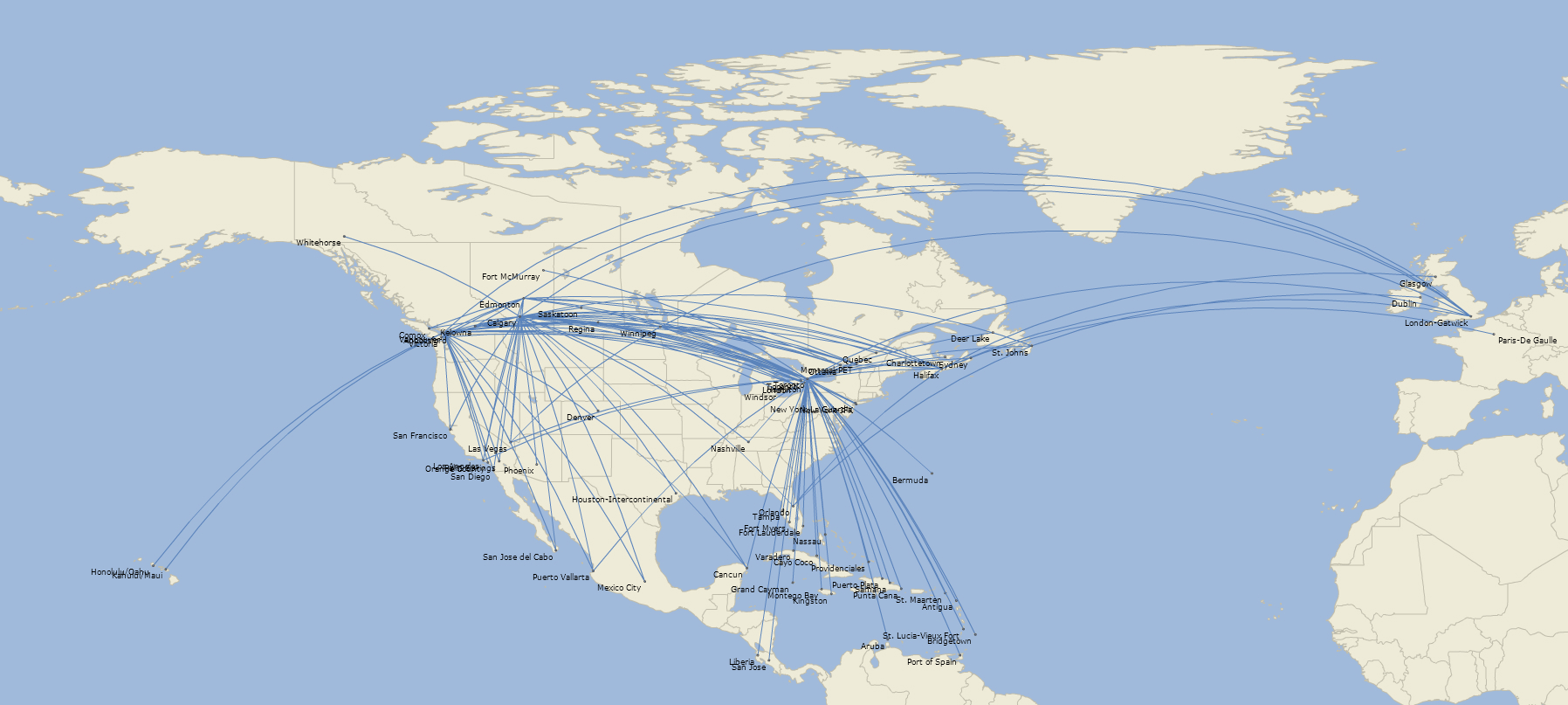Canadians are clamouring for air travel, at least according to the chief executives of the country's largest carriers.
But despite the strong demand, Canada's second largest airline, discount giant WestJet, just reported its first quarterly loss in roughly 13 years, a noteworthy event for an airline long known for cost control and profitability.
Since announcing those results, WestJet's stock price slid about 13%.
So, what happened?
Speaking during the company's second quarter earnings call, executives attributed the reversal of fortunes to several factors, including rising fuel prices, new competition, downward fare pressure and the threat of a pilot strike, which cast a long shadow over WestJet's brand.
Chief executive Ed Sims also found himself again defending WestJet's ongoing transformation from a traditional low-cost-carrier to a global, hub-based airline.
"The external environment has changed considerably since we outlined this strategy," Sims said on 31 July. "We are, of course, disappointed in these results and very focused on cost correction."
Calgary-based WestJet posted a second quarter operating loss of C$27.6 million ($21.2 million), and a net loss of C$20.8 million.
"WestJet is in a strategic predicament with a very long to-do list," analysts with JP Morgan wrote in a 2 August investor update. "Things have gotten incrementally worse over the past several months and, accordingly, investors are losing some of their patience."
Sims says "demand remains solid", but adds "industry capacity increases in key domestic markets are dampening yield growth".
WestJet's yield (measured in revenue per passenger mile) slipped 3.2% year on year in the second quarter, while revenue per available seat mile (RASM) dropped 1.9%, the company reports.
WestJet anticipates RASM will decline 4-6% year on year in the third quarter.
Meanwhile, the carrier's cost per available seat mile surged 8.7% in the second quarter. Nearly all categories of expenses jumped, but none so much as fuel, which shot up 34% in one year, costing WestJet an additional C$77 million, it says.
"Our 2018 results are off track," Sims says. "We are now operating in a very different fuel and competitive environment."
Air Canada operates in that same environment, but it managed to post a second quarter operating profit of C$226 million. (It did report a second quarter net loss, but largely blames C$190 million in charges from planned divestiture of 25 Embraer 190s.)
'OVERSUPPLY'
WestJet's Sims says his company's second quarter results partly reflect "symptoms of oversupply in the domestic market".
"We are seeing the widespread opening of low-fare inventory, the collapsing of advance purchase requirements" and downward pressure on yields and peak-season fares, Sims says.
He does not cite specific competitors, but a small ultra-low-cost startup called Flair Airlines has been expanding rapidly.
Flair, which advertises fares as low as C$39, has in recent months added flights to cities in the heart of WestJet's network, like Calgary, Edmonton, Toronto, Winnipeg and Vancouver. Flair still carries less than 3% of Canada's domestic jet aircraft seats, according to FlightGlobal schedules data.
The threat of a strike by WestJet's pilots also weighed on second quarter revenue, executives say.
Newly represented by the Air Line Pilots Association (ALPA), WestJet's pilots had threatened to walk off the job in May over issues that included WestJet's intention to pay reduced rates to pilots who fly for the company's new ultra-low-cost subsidiary Swoop.
Although WestJet and ALPA avoided a strike, passengers nonetheless cancelled reservations and booked with other carriers, costing WestJet "tens of millions of dollars", Sims says.
PULLING BACK CAPACITY
The difficult quarter spurred WestJet to slash planned capacity growth, cut under-performing routes and further consolidate flying at its primary hubs, according to executives.
"We are making adjustments to the balance of the year," Sims says, adding that WestJet is "less tolerant to marginal-profit flying during high fuel levels".
The company has lobbed 6 percentage points off its planned fourth quarter expansion, translating into full-year 2018 capacity growth of 5.5-6.5%, down from a previous 6.5-8.5% projection, WestJet says.
Despite the quarterly loss and capacity pull-back, Sims insists WestJet remains committed to its plan to transform into a global, network-style airline.
The overhaul has been underway for several years, during which WestJet acquired its first widebodies (used Boeing 767s), launched European flights and tweaked its network to consolidate more flying at its Calgary, Toronto and Vancouver hubs.
WestJet's network radiates from three hubs and includes several new European routes

FlightGlobal's August schedules data.
Further evolution will come in early 2019, when WestJet expects to receive the first of 10 787-9s, which it intends to deploy to Europe and possibly Asia, executives say.
Meanwhile, WestJet has made other changes befitting a network carrier, rolling out a basic economy product, equipping 737s with two-by-two business-class seats (replacing a blocked-middle-seat premium product) and building passenger lounges at hubs.
WestJet is also working to form joint ventures with Delta Air Lines (a deal that only requires regulatory approval), Air France-KLM Group and possibly other airlines, Sims says.
On the other end of the spectrum, in June, WestJet launched in-house ultra-low-cost carrier Swoop to counter threats from upstarts.
"We firmly believe that this strategy will yield attractive shareholder returns," Sims says.
Source: Cirium Dashboard



















